You’re probably wondering why you should bother learning about bug bites in Montana.
We’ve all experienced the frustration and discomfort of mosquito bites, but what if I told you that some pesky critters in Montana can do more than just leave you scratching?
Yes, I’m talking about potential risks such as infected mosquitoes and the species of these insects that can cause joint pain and minor illness.
I’ve delved into articles, consulted with health officials and veterinarians, and gathered insights to help you navigate the bug bite landscape.
Together, we’ll uncover the secrets of mosquito pools, and learn how to protect ourselves with insect repellents and protective clothing. Trust me, this isn’t your average bug bite conversation.
- Related article: Bugs in Montana
Let’s get started and ensure your outdoor adventures are itch-free and filled with wonder!
What Causes Bug Bites?
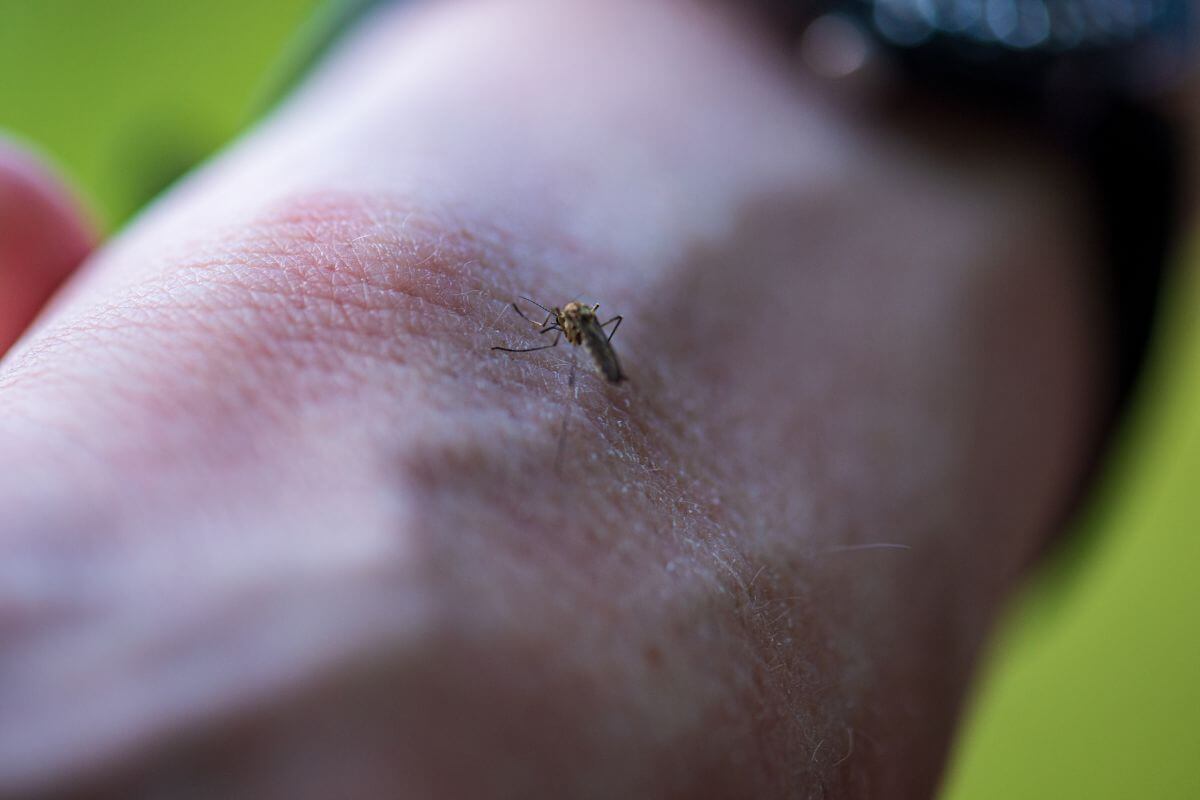
Bug bites can happen for a variety of reasons. These annoying little pests are just doing what bugs do, whether it’s feeding on our blood, defending themselves, or reacting to disturbances.
When a bug bites, the discomfort, and itching we feel are mainly due to their mouthparts piercing our skin and depositing saliva.
This saliva often contains anticoagulants to prevent our blood from clotting, making it easier for them to feed.
Now, let’s talk about the different types of bugs commonly found in Montana and their biting behaviors. Here are 10 of them:
1. Cockroaches – Montana has American, Oriental, and German cockroaches, and while they may not typically bite, they can transmit diseases like salmonella and gastroenteritis.
2. Mosquitoes – With over 60 species buzzing around, Montana is a haven for mosquitoes. These tiny vampires can transmit diseases like malaria, West Nile virus, Zika virus, and dengue.
3. Ants – Carpenter ants are common in Montana and can occasionally bite. Fire ants, too, are found here and have a venomous bite.
4. Flies – Biting flies such as black flies, horse flies, and deer flies are quite active during the summer months. Their bites can lead to allergic reactions and may require medical attention in some cases.
5. Chiggers – These small mites love warm weather and can leave you itching like crazy. Treatment usually focuses on reducing itchiness.
6. Fleas – Flea bites can be incredibly itchy and uncomfortable, not to mention the fact that fleas can transmit diseases, making their bites a cause for concern.
7. Bees – While bees don’t technically bite, their stings can be quite painful. Allergic reactions to bee stings can be severe and should be treated by a medical professional.
8. Bed Bugs – These little creatures bite and feed on our blood, causing both discomfort and sleep disruption. Their bites often leave physical marks on the skin.
9. Blister Beetles – Found outdoors, especially in fields, these beetles emit cantharidin. When crushed on the skin, it can cause painful blisters and sores.
10. Centipedes – While usually more helpful than harmful, centipedes can bite and leave behind redness and skin damage. They often hunt other pests in homes.
If you’re an adventurous type of person, be prepared and take precautions when venturing into the wilderness of Montana.
Arm yourself with insect repellents, wear protective clothing, and keep an eye out for these pesky critters.
What Are the Symptoms and Treatments of Bug Bites?
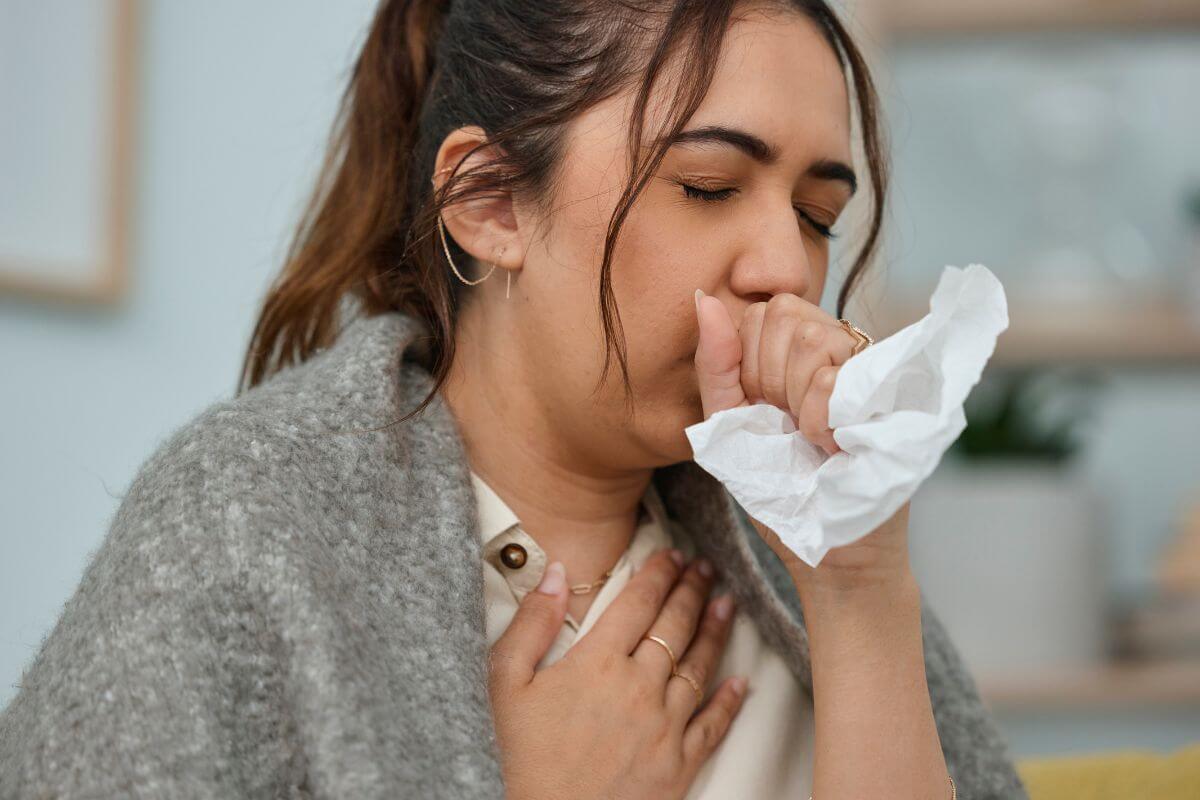
Bug bites can be quite bothersome, causing a range of symptoms that vary depending on the type of bug and individual reactions.
Common symptoms include itching, redness, swelling, and pain at the site of the bite. Some people may also experience a rash or develop fever-like symptoms.
| Insects | Symptoms | Treatment | When to Call the Doctor |
|---|---|---|---|
| Flea, Mite, or Chigger | Small bumps on the skin Pain or itching Dermatitis (inflammation of the skin) Allergy-like reactions such as swelling or blistering | Clean the area well with soap and water. Use an antihistamine to help reduce itching, if needed. Apply cool compresses and avoid heat Take acetaminophen for discomfort if needed | Pain or itching that doesn’t stop Signs of infection, such as increased redness, warmth, swelling, or fluid leaking. Fever Signs of a severe allergic reaction (Call 911) such as: Hives, itching, and swelling in areas other than the sting site. Abdominal cramping, vomiting, intense nausea, or diarrhea |
| Tick | Small bumps on the skin Pain or itching Dermatitis (inflammation of the skin) Allergy-like reactions such as swelling or blistering. | Clean the area well with soap and water Use an antihistamine to help reduce itching, if needed. Apply cool compresses and avoid heat Take acetaminophen for discomfort if needed. Seek follow-up care | Pain or itching that doesn’t stop Signs of infection, such as increased redness, warmth, swelling, or fluid leaking. Fever |
| Bees, Wasps, Hornets, Yellow Jackets | Local skin reactions: pain, swelling, redness itching, warmth, small amounts of bleeding or drainage, Hives. Full-body symptoms (severe allergic reaction): coughing, tickling in the throat, tightness in the throat or chest, breathing problems or wheezing, nausea or vomiting, dizziness or fainting, sweating, anxiety, itching, and rash elsewhere on the body. | Remove the stinger (if applicable) Clean the area well with soap and water. Apply a cold or ice pack wrapped in a cloth. Elevate the affected limb (if stung on an arm or leg). Use over-the-counter products for insect stings. Apply antihistamine or corticosteroid cream or calamine lotion. Give acetaminophen for pain Give an over-the-counter antihistamine (if approved by a healthcare provider). | Signs of a severe allergic reaction (Call 911) such as: Hives, itching, and swelling in areas other than the sting site. Abdominal cramping, vomiting, intense nausea, or diarrhea |
Tips to Avoid Bug Bites
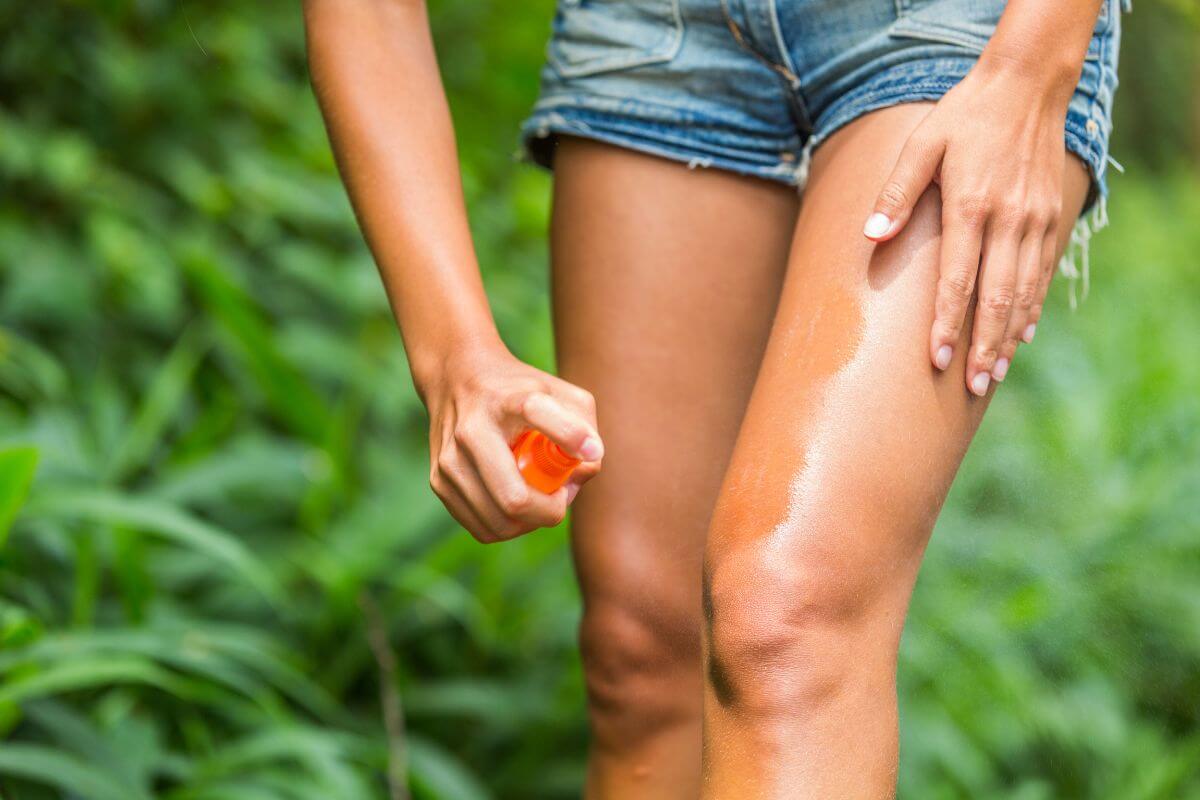
With the warm summer months comes the buzzing and biting of mosquitoes, leaving us itching and searching for relief.
Protecting yourself from these pesky insects is crucial not only to avoid uncomfortable bug bites but also to prevent potential health risks.
Here are some essential tips for effective protection from mosquitoes and other insects.
1. Choose the Right Repellent: Bug-Free Skin
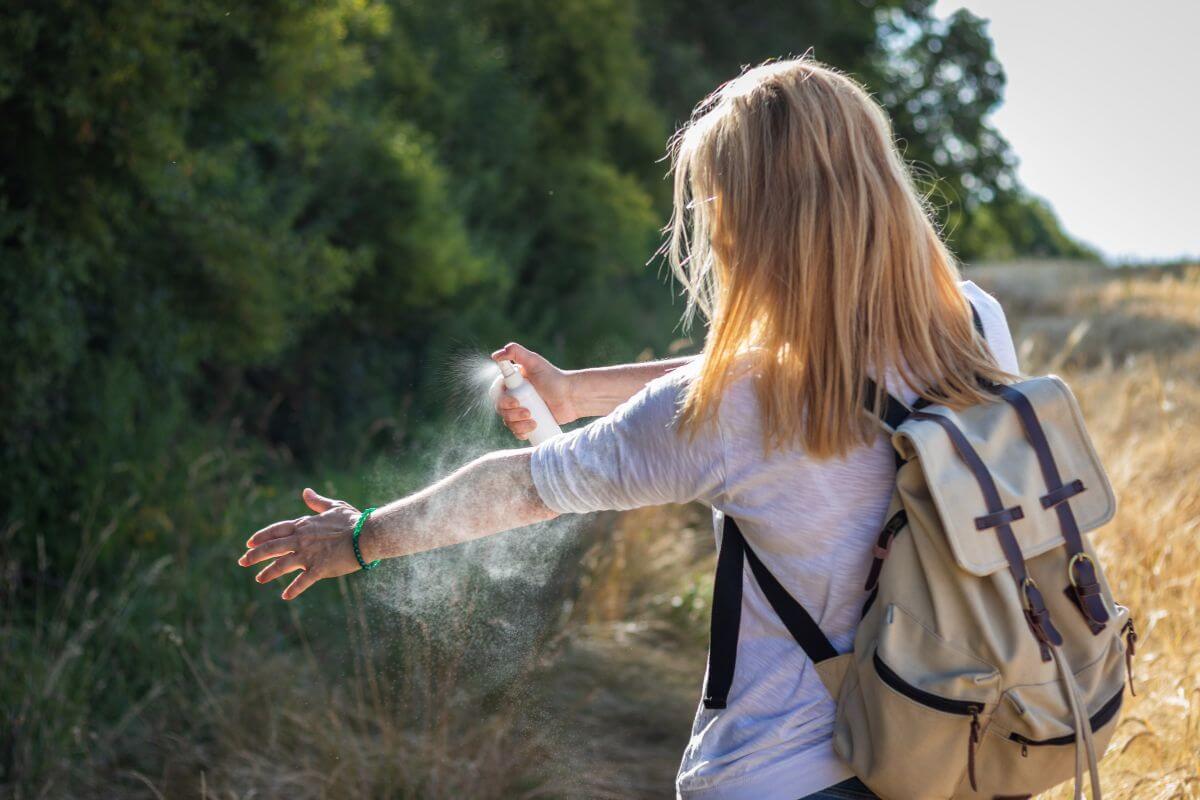
When it comes to bug bites, prevention is key. And the first line of defense? Bug repellents.
But with so many options out there, how do you choose the right one for bug-free skin? Here are a few tips to help you out.
First and foremost, look for EPA-registered insect repellents. These have been tested and proven effective against mosquitoes, ticks, and other bugs.
Opt for products that contain DEET or picaridin, as these ingredients are known to provide long-lasting protection.
When applying bug repellent, remember to put on sunscreen first, let it dry, and then apply the repellent.
Avoid products that combine sunscreen and repellent, as sunscreen needs to be reapplied more frequently than bug repellent.
Also, remember to never spray repellent directly on your face or under your clothing.
2. Cover Up for Protection: Beat Bugs
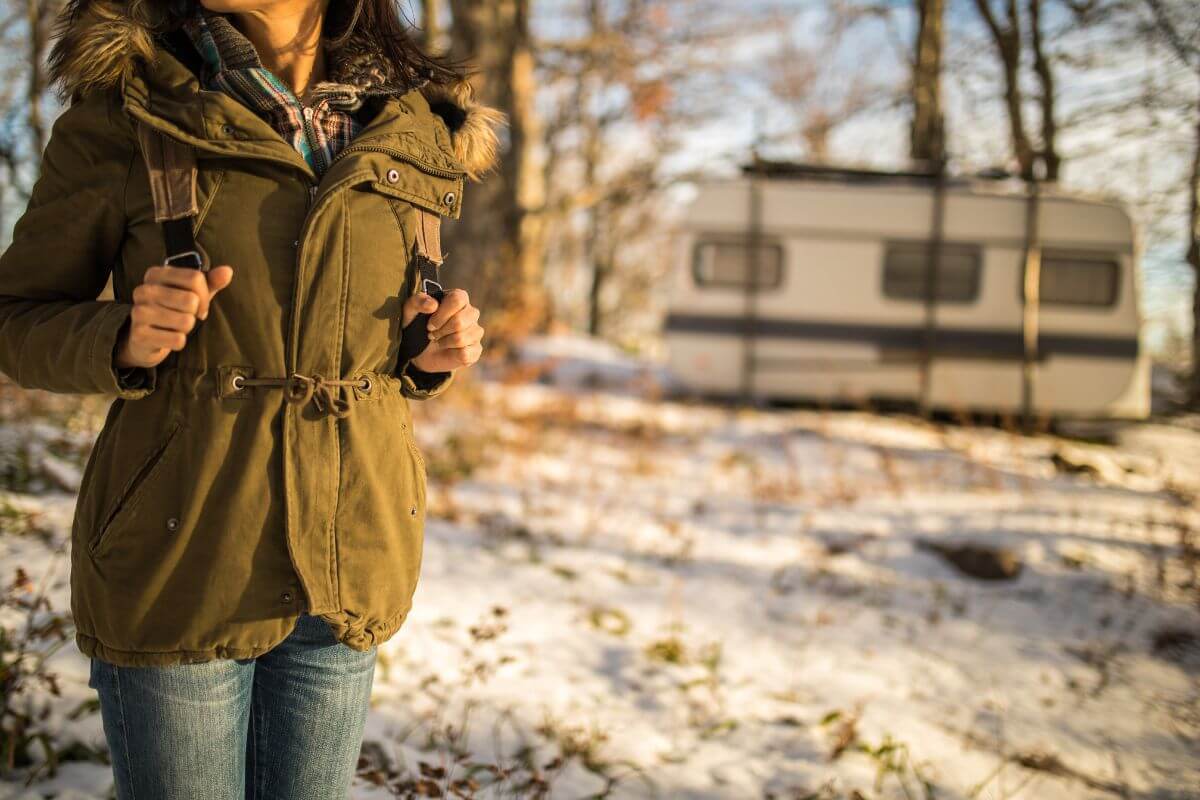
When exploring the great outdoors in Montana, it’s important to protect yourself against bug bites.
These pesky critters can not only cause annoying itchiness, but in some cases, they may also carry diseases.
To keep those bugs at bay, consider covering up with long-sleeved shirts, pants, socks, and a hat whenever possible.
An extra layer of clothing acts as a barrier, making it harder for bugs to reach your skin.
By sealing off any vulnerable areas, you minimize the risk of bug bites and keep yourself comfortable throughout your adventures in Montana.
By following these tips and taking extra precautions, you can beat the bugs in the state and enjoy your outdoor experiences with peace of mind.
3. Bug-Proof Your Stay

When it comes to bug bites, prevention is key. So, before you embark on your Montana adventure, it’s important to bug-proof your stay.
Start by choosing accommodations with air conditioning and good window screens.
These simple measures can help keep those pesky bugs at bay, allowing you to enjoy a comfortable and bite-free stay.
For added protection, consider sleeping under a permethrin-treated bed net tucked tightly under the mattress.
This will create a barrier against insects, ensuring a peaceful night’s sleep without any unwelcome visitors.
Outside of your accommodations, take the time to seal any gaps or cracks in windows and doors.
This will not only prevent bugs from entering, but it will also help keep the temperature inside cooler, creating a more pleasant environment overall.
Maintain a clean yard, deck, and picnic area to prevent flies and other insects by promptly removing leftover food and animal waste.
By following these simple steps, you can bug-proof your stay in Montana and focus on enjoying all the beauty and adventure the state has to offer.
4. Children and Bug Repellent

When it comes to bug bites, protecting our children is of utmost importance. Their delicate skin is more susceptible to bites and the potential risks that accompany them.
But when it comes to applying bug repellent on our little ones, we need to exercise caution.
First and foremost, it’s important to note that bug repellents should not be used on babies under 2 months old.
Their young skin is still developing, and their bodies are not yet ready for the substances found in repellent products. Safety first, always.
For children between 2 months and 3 years old, you’ll want to avoid using bug repellent products that contain the oil of lemon eucalyptus.
This specific ingredient has the potential to cause irritation in young children. Instead, opt for repellents formulated specifically for their age group.
When applying bug repellent to children, it’s best to spray it on your hands first and then gently spread it on their exposed skin.
This method ensures that they have minimal exposure to the product and reduces the risk of accidental ingestion.
And speaking of ingestion, it’s crucial to never, ever apply repellent to their hands. As we all know, little ones love putting their hands in their mouths, and we want to avoid any potential harm.
And remember, if you have babies under 2 months old, using mosquito netting with an elastic edge over carriers or car seats can be a great alternative to keep them protected.
Now armed with this knowledge, you can confidently protect your kids from bug bites while keeping their safety at the forefront.
5. Bug Safety During Pregnancy

When you’re pregnant, taking extra precautions to prevent bug bites while traveling is essential.
Protecting yourself from bug bites can help safeguard both you and your developing baby. Here are some important tips to keep in mind:
- Use Epa-Registered Insect Repellents – These repellents are safe for pregnant and breastfeeding women when used as directed.
- Treat Bug Bites Promptly – If you do get bitten, avoid scratching the affected area, as it can lead to infection. If symptoms worsen or you have concerns, seek medical attention.
Remember, bug safety during pregnancy is crucial for both you and your baby’s well-being.
By following these Montana insect guidelines and using insect repellents as directed, you can minimize the risk of bug bites and enjoy a worry-free travel experience.
Common Bug Bite Diseases
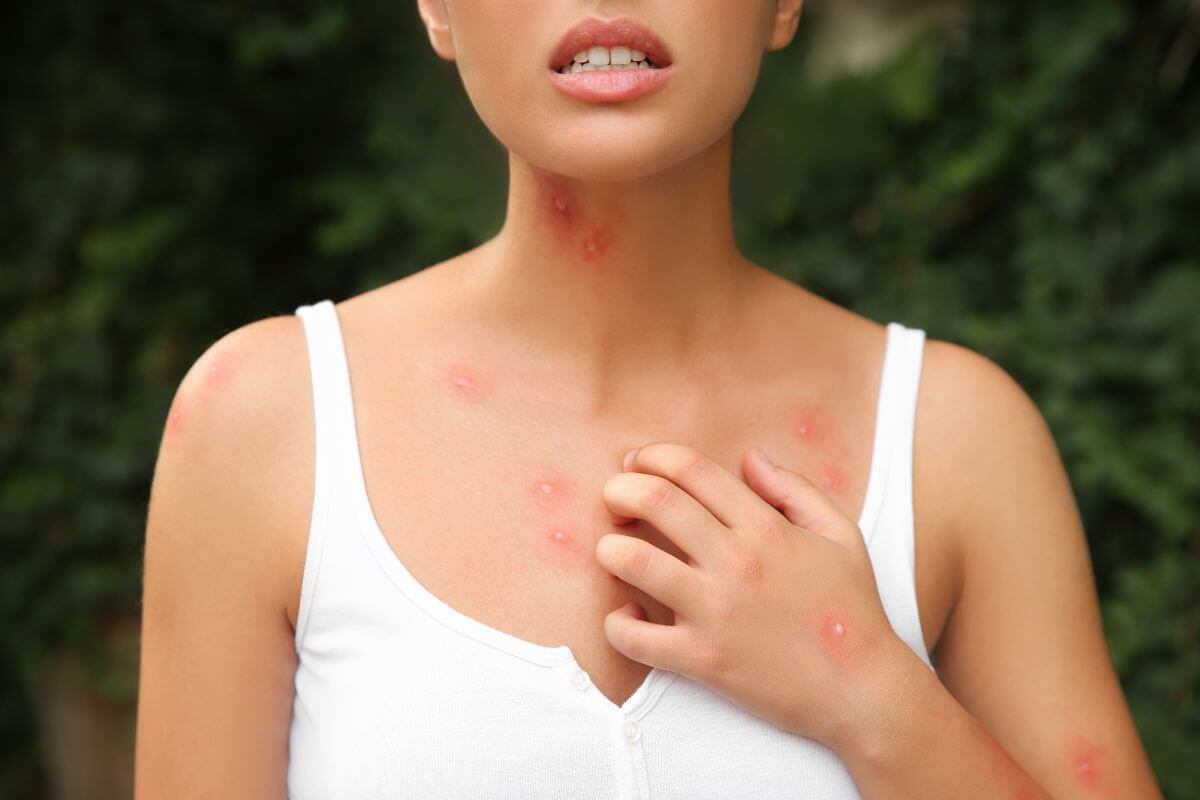
It’s important to be aware of common bug bite diseases and how to protect yourself.
Health officials emphasize the need for extra care when it comes to bug bites, as some can lead to serious health issues.
Take the necessary measures to keep yourself and your loved ones safe from bug bite-related illnesses.
Here are the most common bug bite diseases in Montana to keep you informed:
West Nile Virus

Montana’s bug season can be a real buzzkill, thanks to those pesky mosquitoes. But it’s not just their annoying bites that you need to worry about.
These bloodsuckers can also carry the West Nile Virus (WNV), which poses a serious health risk.
Unfortunately, there are no specific drugs or vaccines available for humans to prevent or treat the infection.
However, there are ways you can take to lower your chances of getting bitten.
Here are four simple steps to help prevent West Nile Virus infection:
- Dodge Dawn and Dusk – Try to avoid being outdoors during dawn and dusk when mosquitoes are most active.
- Dress Wisely – Protect yourself by wearing long-sleeved shirts, long pants, socks, and closed-toe shoes. Opt for light-colored and tightly woven fabrics, as mosquitoes are less attracted to these.
- Drain Standing Water – Mosquitoes breed in standing water, so it’s essential to eliminate or reduce any stagnant water around your home. Regularly drain or remove water from containers, bird baths, flower pots, and other potential breeding sites.
- Defend with DEET – Use insect repellents that contain DEET (N, N-diethyl-m-toluamide) or picaridin (KBR 3023). These repellents are effective in keeping mosquitoes at bay.
It’s also crucial to be aware of the symptoms of West Nile Virus infection. Many people infected with WNV show no symptoms (asymptomatic).
However, roughly 20% may experience fever along with other symptoms such as headache, body aches, vision loss, joint pain, vomiting, diarrhea, rash, and fatigue.
Symptoms usually appear within 3 to 14 days following a mosquito bite. In rare cases (less than 1%), severe neurological illness may occur, which can be fatal.
As of September 2023, Montana’s WNV surveillance has detected activity in 26 counties, with 15 human cases (including 11 neuroinvasive cases), 13 horse cases, and 36 positive mosquito pools.
So, take the necessary precautions, stay informed about the symptoms, and enjoy the beautiful Montana outdoors while keeping those mosquito bites and WNV at bay.
Bluetongue and Epizootic Hemorrhagic Disease

Bluetongue Disease (BT) and Epizootic Hemorrhagic Disease (EHD) are two mysterious viral diseases that pose a threat to both livestock and wildlife.
These diseases, caused by orbiviruses, which belong to the Reoviridae family, have baffled scientists and veterinarians alike.
Transmission of BT and EHD occurs through biting midges of the Culicoides genus. Interestingly, these diseases cannot be transmitted directly from one animal to another.
Hemorrhages, varying in size and affecting different tissues and organs, contribute to the enigma.
In some cases, the lack of oxygen in the blood leads to a distinct bluish hue in the oral mucosa, giving Bluetongue Disease its peculiar name.
Unfortunately, there is no specific treatment available for wildlife populations affected by EHD and BT.
But as many say prevention is better than cure, so if you want to spend time outdoors you must be aware of areas with known Bluetongue and EHD outbreaks.
People should take personal protective measures to reduce their risk of mosquito bites.
These measures include wearing long-sleeved shirts and pants, using insect repellent, and avoiding outdoor activities during peak mosquito hours
Instead, symptomatic care is provided, utilizing topical glucocorticoids and systemic antihistamines to alleviate discomfort and control itching.
Painful Bites
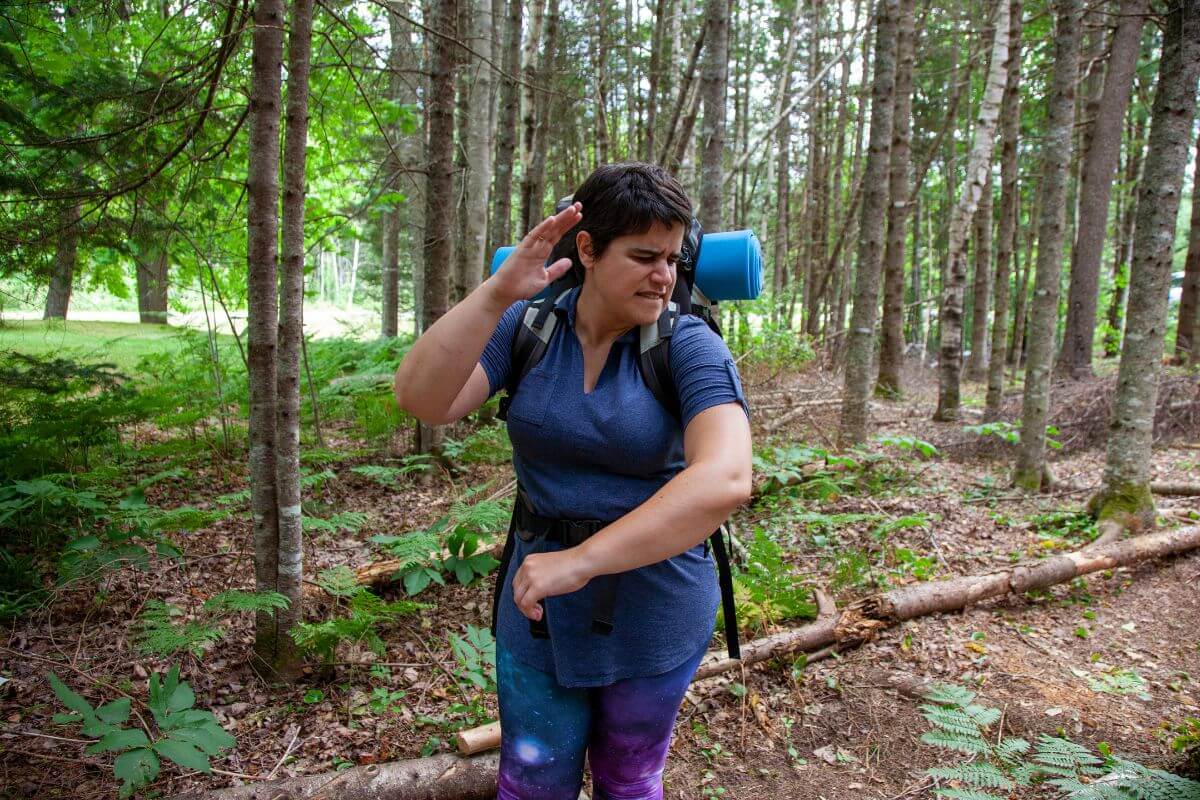
Bites from various insects like horseflies, deer flies, gnats, fire ants, harvester ants, blister beetles, and centipedes can leave you with an unpleasant, painful, and red bump.
While these bites may be discomforting and irritating, they are generally not serious and can be easily treated with some simple care.
Here are a few tips to help alleviate the pain caused by these insect bites:
- Applying a cold compress to the affected area can help reduce both swelling and pain.
- Over-the-counter pain relievers like acetaminophen or ibuprofen can be taken to relieve pain and reduce inflammation.
- Using a topical cream or ointment containing hydrocortisone or calamine can effectively reduce itching and inflammation.
- It is important to resist the urge to scratch the bite, as this can lead to an infection.
However, it is crucial to note that not all insect bites are harmless.
Certain species, such as black widow spiders, brown recluse spiders, and hobo spiders, can cause severe health problems and require immediate medical assistance.
But if you do end up with a painful bite, following these simple tips can help provide relief. Stay safe and take care!
Montana Bug Bites Final Thoughts
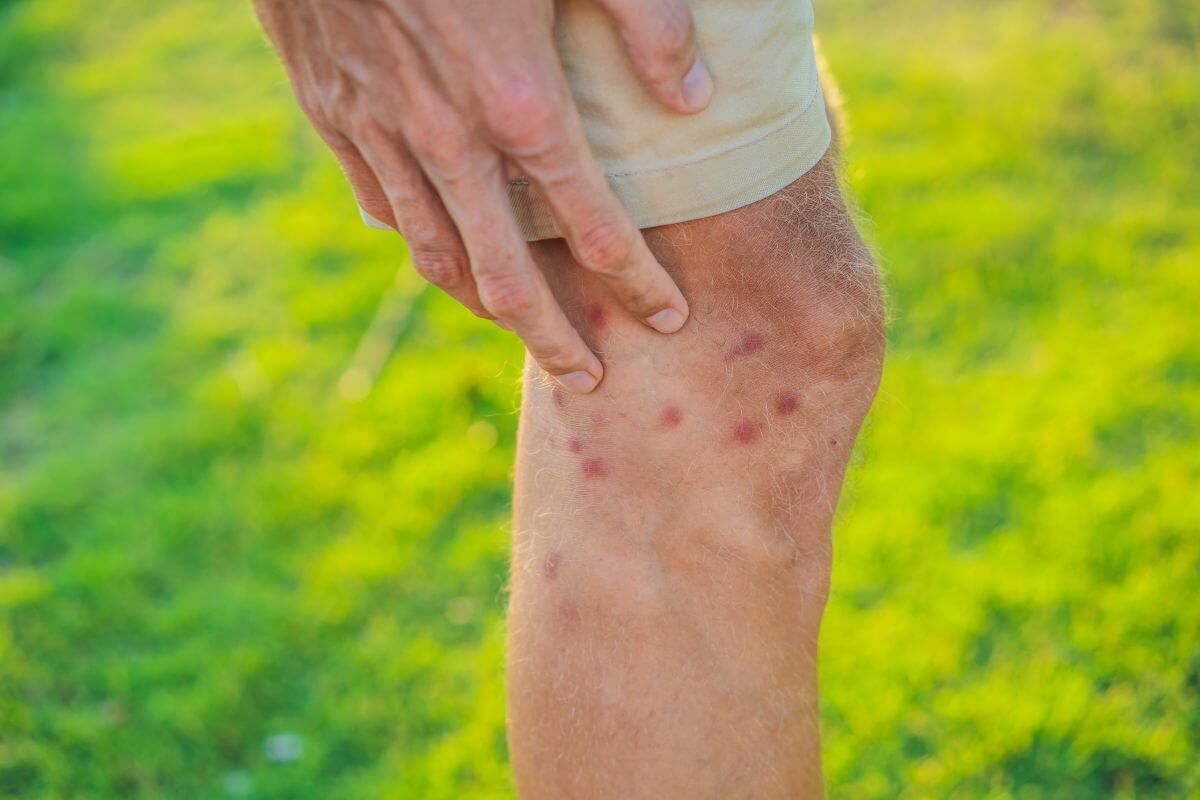
When exploring the beautiful outdoors of Montana, it’s crucial to be aware of the risks associated with bug bites.
While most bites may only cause discomfort and irritation, there are certain species that can pose serious health threats.
It’s important to take precautions to protect yourself and minimize the potential impact on your outdoor activities.
Mosquitoes, for example, are not only annoying but can also transmit diseases such as West Nile virus.
By using insect repellents, wearing protective clothing, and being vigilant about potential breeding areas, you can minimize the risks associated with bug bites and ensure a safer and more enjoyable experience.
Taking these extra precautions can significantly reduce your risk of mosquito bites and the potential for related illnesses.
To fully enjoy your outdoor adventures in Montana, it’s crucial to prioritize bug bite prevention. Remember, prevention is always better than cure.
As always, stay informed, take necessary precautions, and embrace Montana’s nature without the worry of insect-related irritations or health issues.
Montana Bug Bites FAQs
1. Are Chiggers Present in Montana?
Yes, chiggers are indeed present in Montana. While they may be more prevalent in states like Missouri, Arkansas, Oklahoma, Nebraska, and Iowa, chiggers can be found in all 50 states, including Montana.
These tiny bugs can be quite pesky and their bites can cause itching and discomfort.
It’s important to take precautions, such as wearing long-sleeved clothing and using insect repellent, to minimize the risk of chigger bites while exploring the great outdoors in Montana.
2. How Can I Determine Which Insect Has Bitten Me?
To determine which insect has bitten you, pay attention to the symptoms and clues left by the bite. Here’s a handy guide:
- Bedbugs – Look for small, red, and itchy bite marks, which can occasionally trigger serious allergies.
- Bee Stings – Identify a red skin bump with a white border.
- Flea Bites – Notice itchy welts, commonly found on your ankles and legs.
- Mosquitoes – Observe raised, itchy pink bumps, but beware of rare severe reactions.
- Spider Bites – Examine the site for symptoms ranging from redness and swelling to more serious issues requiring immediate care.
Ticks – Be cautious of Lyme disease; check for a bull’s-eye rash.
3. What Does a Mite Bug Bite Typically Appear Like?
A mite bug bite typically exhibits several common signs that can distinguish it from other types of bites, like a spider bite:
- Red, Rash-Like Marks – Look for red, rash-like marks on your skin in the affected area.
- Small Bumps – Mite bites often start as small bumps, which may become hard or inflamed over time.
- Irritation, Itching, and Pain – Experience irritation, itching, and pain near the site of the mark, rash, or bump.
- Swelling or Blisters – Some mite bites can result in swollen or blistered skin near the bite area.
4. What Are Those Little Red Bugs in Montana?
These pint-sized creatures belong to the arachnid family and are commonly known as clover mites or spider mites.
They do not bite or sting and pose no significant physical risks. However, their number and persistence can be a source of annoyance and frustration.
Remember that they may be somewhat pesky, but they pose no real threat.
5. Are There Any Poisonous Bugs in Montana?
There are only 2 insects that pose a potential threat. The black widow spider, known for its distinct red hourglass shape, can be found in the region.
While generally non-aggressive, the black widow will bite if it feels threatened, especially when protecting its eggs.
The aggressive hobo house spider is another venomous insect of concern in Montana. However, it’s important to note that these 2 spiders are the only poisonous bugs to watch out for in the area.
So while in Montana, you can rest easy knowing that venomous bugs are not a significant concern.
Eager to learn more? Explore more about Montana with these recommended articles:
- https://www.urmc.rochester.edu/encyclopedia/content.aspx?contenttypeid=85&contentid=P01032
- https://ukhealthcare.uky.edu/wellness-community/blog/dont-let-bug-bites-keep-you-enjoying-outdoors
- https://dphhs.mt.gov/publichealth/cdepi/diseases/westnilevirus
- https://www.montana.edu/extension/flathead/documents/ag/spiders-insects/Spider%20Identification%20and%20Management%20MSU%20Montguide.pdf
- https://www.montana.edu/news/808/?article=808
- https://www.ncbi.nlm.nih.gov/pmc/articles/PMC8402076/

